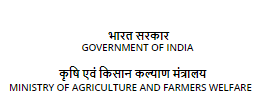Salt fermented Indian mackerel
Background:
Mackerel, locally called Bangda, is a popular fish across the coastal states. This species is highly
exploited from west coast of India. Unfortunately, this fish is exported at very low price of
approximately US$ 2 per kg, though domestic market price is more than that. This fish has got
very high potential to yield a high value product fetching at least Rs. 400 per kg elsewhere in
India. Fermentation is a cheap method of preservation and can preserve and at times enrich
nutritive value of fish. A stable product has been developed using mackerel, similar to Lonailish,
which is very popular in Tripura, Assam and a part of Bengal. The lonailish gets into the country
from Bangladesh because availability of Hilsa in India is very scarce now days. Preliminary
experiments in our laboratory suggest that salt fermented mackerels are stable and have good
potential for a commercial venture. At present considerable amount of dried mackerel is
marketed through local fish markets and reaches the north eastern part of India. Dried mackerel
costs about Rs 200/- per kg in the markets of Tripura, Manipur and Sikkim. However, considerable
moisture loss in addition to transportation costs does not make it too lucrative for the fishermen.
Salt fermented mackerel being a wet product would not have moisture loss and like many
fermented products in North East, would cost approximately Rs 500-700/- per kg. The proposed
technology envisages at least 3 times more earnings for fish by fermentation.
Technology Details:
The proposed technology involves development of salt fermented Indian mackerel, Rastrelliger
kanagurta, with the help of previously isolated fermenting microflora for accelerating the rate of
fermentation. The duration of the time-consuming process of fermentation can thus be reduced
considerably. In the past, different interventions to accelerate the fish fermentation like raising
the temperature (Lopetcharat and Park, 2002), addition of enzymes (Gildberg and Shi, 1994), and
reducing salt concentration (Beddows and Ardeshir, 1979) etc have been experimented with
some other chemical methods. However, chemical methods used to ferment the fish may cause
adverse effects on sensory properties of final product. Likewise, rising temperature and adding
enzymes are high energy expending methods and are impractical for the industries. Therefore,
microbial fermentation could be more efficient than other methods. The characterized
fermentation flora can be used for biotechnological application as source of extracellular
enzymes and as starter culture to accelerate the fermentation process. Moreover, salt
fermentation is a process that destroys the spoiling microbes in fish by virtue of acidic conditions.
Fermented foods are often associated with the development of healthy immune system, preventing growth of pathogenic bacteria, antioxidant function that helps eliminate free radicals
and other cancer causing substances, and as a source of digestive enzymes that assist in the
breakdown of food.
Salient features of the technology
• Supply of bacterial isolates with biotechnological potential to augment fermentation
process.
• The importance of fermented foods is increasing as health food due to presence of
probiotic microorganism and bioactive peptides.
• Indian mackerel is the only species suitable so far for salt fermentation as like salt
fermented Lona ilish.
• CIFE Laboratory made salt fermented Indian mackerel has been evaluated from experts
of fermented fish producers and wholesalers from Tripura state and received a good feedback in
terms of quality of the product.
• Excellent acceptance in sensory evaluation
• Prolong shelf life and does not require refrigeration
• No preservative added


